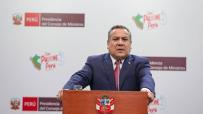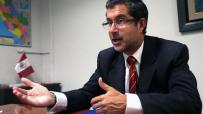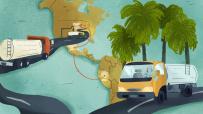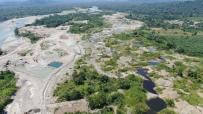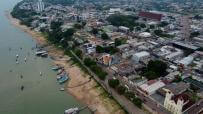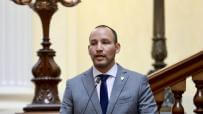
Every three months, Colombia receives bad news about its forests. The Institute of Hydrology, Meteorology and Environmental Studies (IDEAM) issues two or three-page warnings that remind everyone what is already common knowledge: the country is destroying its forests.
The red dots in these bulletins that indicate the main deforestation hotspots move around. They are sometimes located in the southwest, or the north, near Venezuela. They sometimes move to the foothills of the Andean mountain range, or to some municipality on the Pacific Ocean. But they are always in the Amazon. It is as if an epidemic that was impossible to manage has spread and is destroying thousands of hectares of forest.
In 2016 alone, 178,597 hectares disappeared. That is like tearing down half of the city of Lima at a single stroke, or destroying all of Bogota in a single year.
The evil of the Pacific
Río Quito lies at the center of the department of Chocó, one of the Colombian regions most affected by illegal gold mining. To get there, you have to take a boat on from a dirty beach in Quibdó, the departmental capital. We cross a muddy street lined with wooden houses. The 20 dollars we pay guarantee us passage in a motorized boat. Fifteen people can seat themselves on the splitting planks of wood. Sometimes 20 people squeeze in. The sun is making it way west towards the Pacific and right now it is scorching. A few people manage to hide under the canvas, but the rest have to suffer whilst the boat slowly leaves Quibdó sailing against the current of the Atrato River, Colombia’s largest.
There is no precise estimate of the impact, but the today the river channels are distorted.
The journey takes only an hour. For Freddy Palacios, community leader, the speed of the voyage is the best indicator of why, since 2018, his municipality has been appearing so frequently in the IDEAM deforestation bulletins. He tells that a decade ago the trip took around three hours and required more patience. The boat would have to pull into each tiny hamlet that lined the river with its dusty streets to drop passengers. But that all changed Brazilian, Peruvian and Venezuelan miners heard the rumors about gold. As the price of the metal surpassed its historical limits in the international market, the backhoes went to work deep in the forest of Río Quito.
Little by little, with the protection of paramilitary groups, they began to consume the forest and strip the banks of the rivers. There is no a precise estimate of the impact, but today the river channels are distorted. So many navigation routes have been opened up that even the most skillful boatman can get lost.
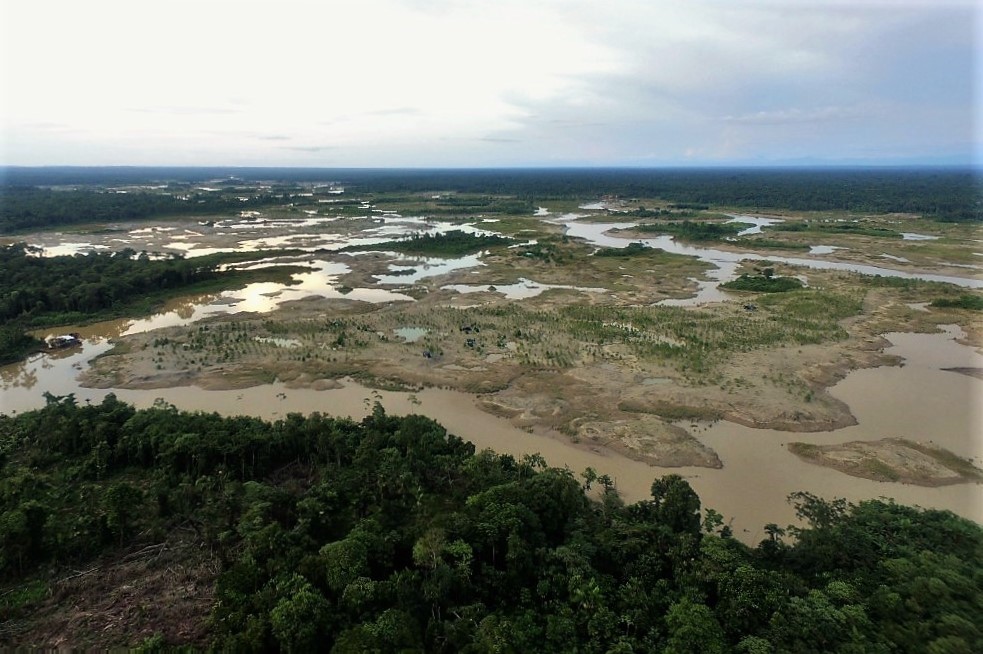
In Río Quito, Chocó, illegal gold mining started to destroy the department's forests since the beginning of this century. Brazilian, venezuelan and peruvian gold prospectors arrived looking for treasures.
Photo: Río Quito's authorities
With his motor boat, Freddy takes us between countless mounds of sand and long mud flats. Avoiding them is not easy. We get lost more than once. And on several occasions we get stuck and Freddy has no choice but to climb into the water up to his waist and push.
At 28-years of age, with broad shoulders and tanned skin, he is unconcerned by scientists’ warnings to Río Quito’s 8000 inhabitants that the water is full of mercury. “How are we going to do that?” he says, laughing. “We have always lived from the river.”
Although gold fever first reached Chocó several centuries ago, the dredges that arrived at the beginning of the 21st century accelerated the destruction of forests at a dizzying rate. In 2001 some 637 hectares were wiped out by mining in Chocó. Alarmingly, by 2014 that figure had grown to 24,450 hectares. Two years later it was clear that the destruction was out of control, having reached 40,000 hectares (of the 8 million hectares of rain forest in existence).
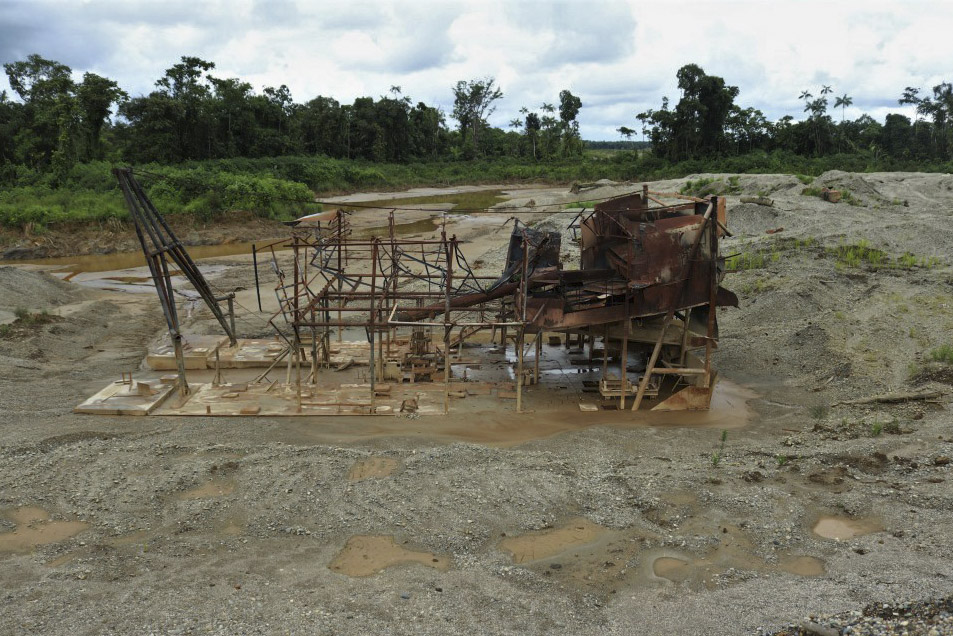
It is said in the region that each dredger earns 45 million pesos per month, divided into 15 workers. On a tour to the Quito River, the abandoned dredges are landscape. Only in 2017, the Colombian Army bombed about 40.
Photo: Sergio Silva Numa
“If you had come twenty or thirty years earlier,” a resident of Río Quito who prefers to remain anonymous tells us, “you would have found a river lined with fruit trees on both sides. Oranges, bananas, borojó, chontaduro. There was everything. We were not rich, but we had enough to eat. Sometimes we would throw a bunch of bananas or whatever we found in the canoe and trade it for other fruits or for fish in any hamlet along the way. But that was a long time ago.”
Before all that ended, the men of Río Quito would also to go into the forest for up to two weeks armed with axes and machetes to log timber and then sell it in Quibdó. “It was a form of subsistence. But now the backhoes drivers knock down the trees with their machinery so that the Brazilians can build the dredges. With these machines they remove all the water and soil in search of gold,” says Freddy, pointing to a dredge that has become rusted with age. It is a structure made of planks and iron rods as high as a three-story building on the banks of the Quito River. Some 15 or 20 people usually work on it, day and night. They do not stop until the tubes have sucked enough mud that the mercury can then help them extract the grams of gold.
In Río Quito the last threat was received in mid-February 2018. It was signed by a group of FARC dissidents.
The scenario facing Río Quito—according to the last census the municipality with the highest percentage of unsatisfied basic needs (98%)—is repeated at a long list of sites across Colombia. The bleak images from southern Bolivar, northern Cauca and eastern Antioquia testify to how the obsession with gold and the lack of state regulation (according to the Government, about 80% of the mineral extraction is illegal) have put an end to thousands of hectares of forest.
There are craters of mud and workers looking everywhere for gold nuggets. Most who oppose the activity have received threats, in form of leaflets under their doors, or text messages and phone calls from paramilitary groups.
In Río Quito the last threat was received in mid-February 2018. It was a leaflet signed by a group of FARC dissidents and warned: “We invite you to be part of this proletarian and peasant army which allows us to defend ourselves from the criminal and bloodthirsty regime.”
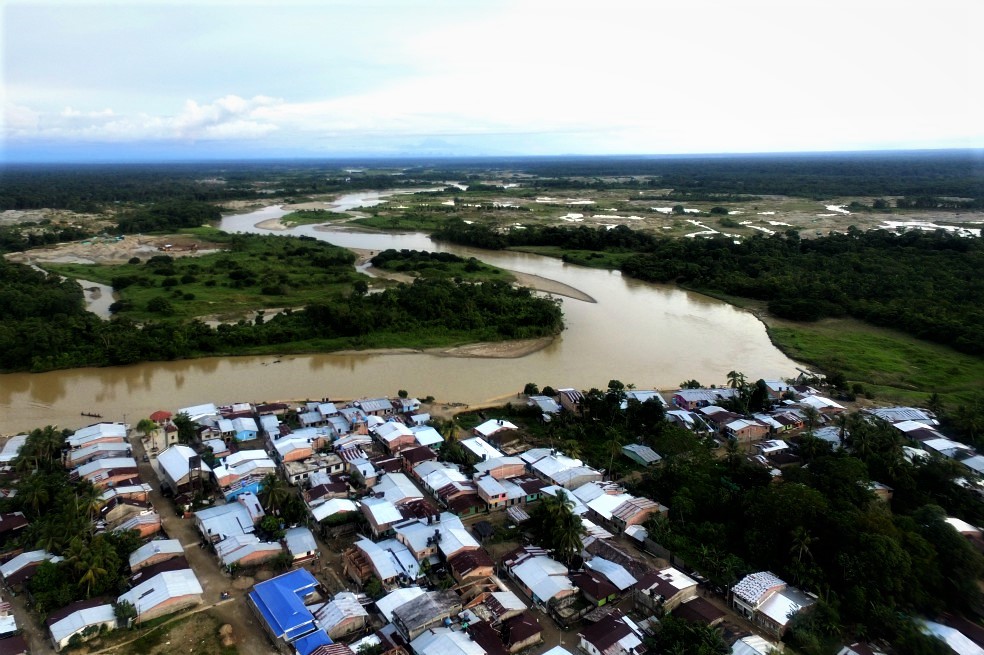
The survival of the communities of Paimadó, Villa Conto and San Isidro depends on the Quito River, an affluent destroyed, diverted, contaminated by the impact of the gold seekers.
Photo: Río Quito's authorities
Whilst their presence has been less noteworthy than that of paramilitary groups or criminal gangs, for the guerrillas the gold has become a source of income. Controlling territory has always been important for any armed actor: the proximity of this territory to the Pacific Ocean makes it an excellent corridor for cocaine trafficking.
The point of no return
Since he began to study the forest in 1965 in Brazil, the biologist Thomas Lovejoy has been one of the most important voices on the Amazon. His studies, which have shown the fragmentation of the ecosystem, are now more powerful than ever. Today he is a professor at George Manson University. He has also been an adviser on biodiversity issues at the Smithsonian, the United Nations, and the World Bank. He is sometimes referred to as the Godfather of Biodiversity.
At the end of February 2018, Lovejoy published a brief article in the journal Science Advances. The warning it contained was disturbing: the Amazon is reaching the point of no return. His calculations show that over the last 50 years the entire Amazon region, which is shared by nine countries, has lost 17% of its vegetation. If that figure reaches 20%, he warned, that the forest will no longer be sustainable. The hydrological cycle will be the first casualty, and the consequences will be felt by the inhabitants of the Southern Cone.
Lovejoy stated: “The will to preserve the Amazon has no correspondence in political actions.” The article was also signed by Carlos Nobre, another researcher who has investigated this ecosystem. According to the scientists, if no major efforts are made to stop phenomena such as indiscriminate logging, the ecosystem will end up becoming an “large savannah”.
Calculations by Thomas Lovejoy show that over the last 50 years the Amazon has lost 17% of its forests.
Since the peace agreement between the government and the FARC was signed in November 2016, the traces of forest loss have become more apparent. The troops may have left the forests to begin to reintegrate into civilian life, but sadly they have been replaced by the sound of chainsaws and roar of fires.
IDEAM’s figures are clear: 70% of Colombia’s deforestation is occurring in the Amazon and it has increased by 44% since the militias departed. The municipalities where the most forests are destroyed are also those where the guerrillas found refuge over many decades: San Vicente del Caguán and Cartagena del Chairá, in Caquetá; La Macarena, in Meta; Puerto Guzmán and Puerto Asís, in Putumayo, and San José del Guaviare, in Guaviare.
In June 2015, when the peace process was already three-years old, we had visited two of these municipalities controlled by the FARC. After a flight of more than an hour in a flimsy five-seater plane, we arrived Uribe, an urban area not far from Casa Verde. The latter, a historic guerrilla camp where several attempts at peace had were made during the 1980s, had been bombed by the government following various setbacks.
On that hot June morning, Alirio recalled how that he had heard the bullets and bombs from his house. He laughed out loud. Now 60 years of age, he had come to the region whilst still a teenager, like most people, in search of wealth. He found a bonanza: timber, marijuana, coca, and cattle. And even tigrillo skins, which, in its own way, was a form of what we now know as species trafficking.
He was a settler living in the Tinigua National Natural Park. But over time he realized he could not continue to be part of a chain that was destroying the forest. “Today we have clear rules: Settling is banned and you can’t cut down more than 10 hectares per year,” he told us. He calmly acknowledged that the FARC had come up with a way of protecting natural resources and preventing overexploitation of the forest. Every peasant had to obey them. Failure to comply meant fines and, sometimes, expulsion from the territory.
Seventy percent of deforestation in Colombia occurs in the Amazon. This deforestation has increased 44% since the departure of the FARC.
As we flew from Uribe to La Macarena in another small plane which, with every updraft, threatened to fall to the ground, it was possible to make out the dense forest in which peasants like Alirio live. Any break in the forest, no matter how small, stood out in the midst of that vast vegetation. Four national parks join to cover more than 3.8 million hectares, an area roughly the size of Switzerland: Tinigua, Picachos, Sumapaz, and Sierra de La Macarena.
The white spots that we noticed that day and that mark the forest day have multiplied over the last year. The FARC’s departure allowed new actors to illegally take over the land. Raw figures provided by Rodrigo Botero, Director of the Foundation for Conservation and Sustainable Development (FCDS), confirm this. The so-called “Green Belt”, a strip created to increase protection, lost 90,000 hectares in 2017 and 2018. At this rate of forest loss, the 2.5 million hectares currently preserved will not survive another three decades.
What is the cause? Who is to blame for the environmental disaster? Why is it so difficult to stop it?
Botero's satellite records show that cattle ranching deforested more than 1.5 million hectares in 2017. A year earlier, new illegal operators had destroyed 3,235 hectares in order to establish coca leaf plantations. In other areas fires exacerbated the destruction: 2,900 cases were reported in the first three months of 2018. The only way for local leaders to draw the Government’s attention was to declare a “public catastrophe.”
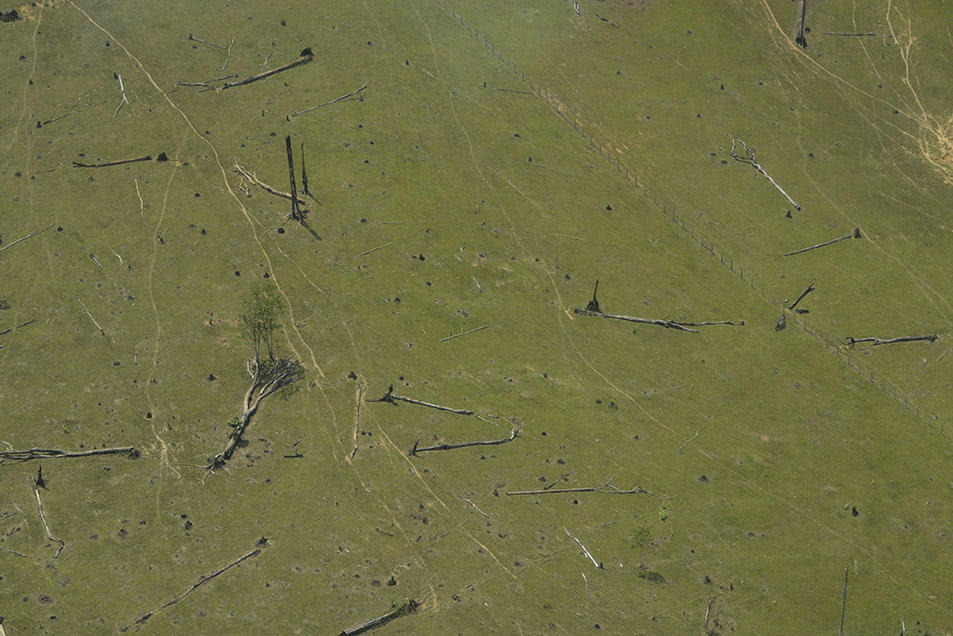
According to the Ministry of the Environment, the main cause of deforestation in Colombia is land grabbing.
Photo: Rodrigo Botero.
If Lovejoy and Nobre’s threshold is going to be reached, cattle and coca seem likely to be major contributors. But not the only ones. As the FARC’s rifles were being surrendered, an unpredicted land grab was just beginning. In an article published in the El Espectador newspaper in March 2018, José Yunis Mebarak, Director of Visión Amazonía, a Colombian initiative create to fulfill the pledge of reducing deforestation in the region to zero by 2020, summarized the situation:
“We are witnessing an “arboricide”, an “animalicide”. The ideology left, but the capital arrived. There is a frenzy for cheap land. We are destroying the forest with such shamelessness, ease and ferocity that we do not even use the wood. We are simply burning everything. If you are wealthy, you buy complete trails and have 200 to 500 hectares deforested in a single cutting. If you are modest, from 1 to 15 hectares (...) the Guaviare is the same size as Costa Rica, 5.5 million hectares. Whereas Costa Rica has a population of 5.5 million, in the Guaviare there are only 120,000 people. However, they have already burned and transformed 500,000 hectares of forest where 250,000 cattle graze. And their ambition and plan is to continue logging, perhaps another 400,000 or 1 million hectares mainly for cattle or crops like rubber or cacao.”
The multimillion dollar business of burning the forests
It must have been a difficult couple of years for Luis Gilberto Murillo. When he assumed his position as Colombia’s Minister of Environment in April 2016, one of the main tasks was to fulfill the agreement that the country had signed months earlier at the Climate Change Summit in Paris. Colombia had committed to achieving a zero deforestation in the Amazon in return, for US$100 million from Norway, Germany, and the United Kingdom. In February 2018, Murillo himself admitted that the goal was impossible. As an alternative, he proposed extending the deadline to 2022 or 2025.
The announcement was made when a large part of the Amazon region was on fire. In Guaviare, the department of most concern to José Yunis, the flames had devoured nearly 20,000 hectares. In the Sierra de La Macarena they destroyed another 1,035. If illegal mining was behind the forest destruction in his native Chocó, Murillo knew in the south of the country there were even more powerful forces at work.
“Slashing and burning a forest can cost between US$333 and US$1,000. A peasant cannot pay for that,” he notes. According to the Amazon Institute of Scientific Studies (SINCHI), in the second week of February 2018 there were already 2,035 fires spreading across the region.
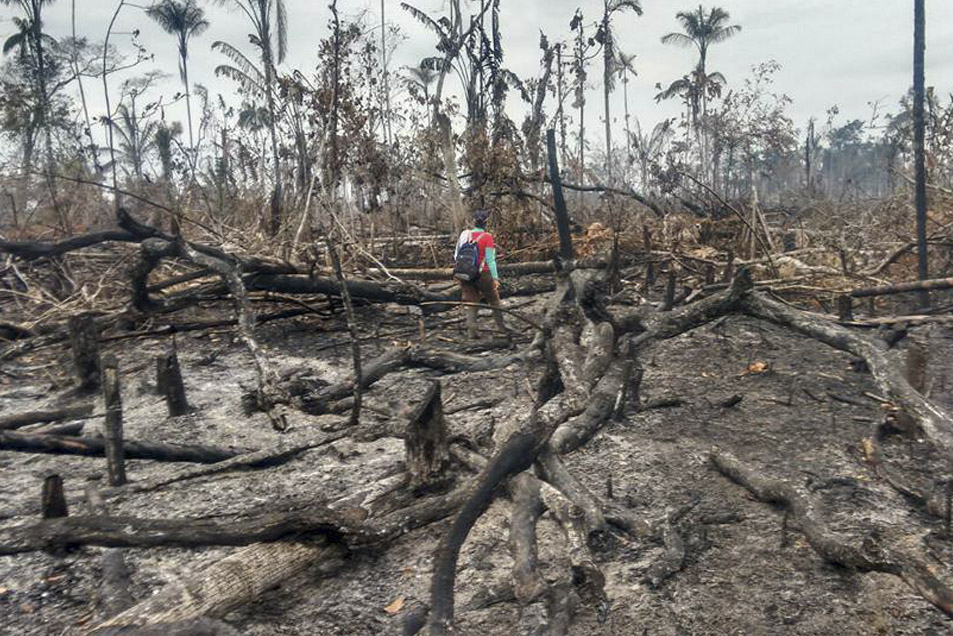
The wildfires of Guaviare affected about 20,000 hectares in the first three months of 2018.
Photo: Ministry of Environment of Colombia
There are many hypotheses to explain why so many forests are burning across southern Colombia. Over a period of 15 years, the Catalonian biologist and geographer, Dolores Armenteras, has been one of the people making the greatest efforts to understand the phenomenon.
In 2013, after comparing data and analyzing satellite images, she published a study that shed light on what had happened in the region over a decade. Together with Liliana Dávalos, a biologist at Stony Brook University; Jennifer Holmes, an economist at the University of Texas, and Nelly Rodríguez, a forest engineer, she concluded that land grabbing has been the principal cause of the many fires. Once it was determined that the number of cattle did not increase between 2000 and 2009, and that the price of meat had remained constant, the hypothesis that livestock was the main culprit in the destruction of the Amazon collapsed.
Her most recent research has revealed another disturbing conclusion. After comparing satellite data from Venezuela, Colombia, Ecuador, Peru, and Brazil collected over 12 years, Armenteras discovered another factor: the construction of communication channels, mainly in the form f roads.
One event encapsulates the difficulties that authorities face in attempting to control Colombia’s forests. Following publication in 2016 of a journalist report about the depressing scenario, we received a call from the Environmental Crimes Unit of the Prosecutor's Office. The official explained that his team was completely unaware of what was taking place on the illegal roads and was keen to begin collecting information. The journalist, he said, would be one of his sources.
Data from the Foundation for Conservation and Sustainable Development (FCDS) indicates if the destruction continues, the loss of natural forest by 2020 will have increased by 200%. The epidemic of deforestation will go on, without anyone able to contain it.
 Tienes reportajes guardados
Tienes reportajes guardados






